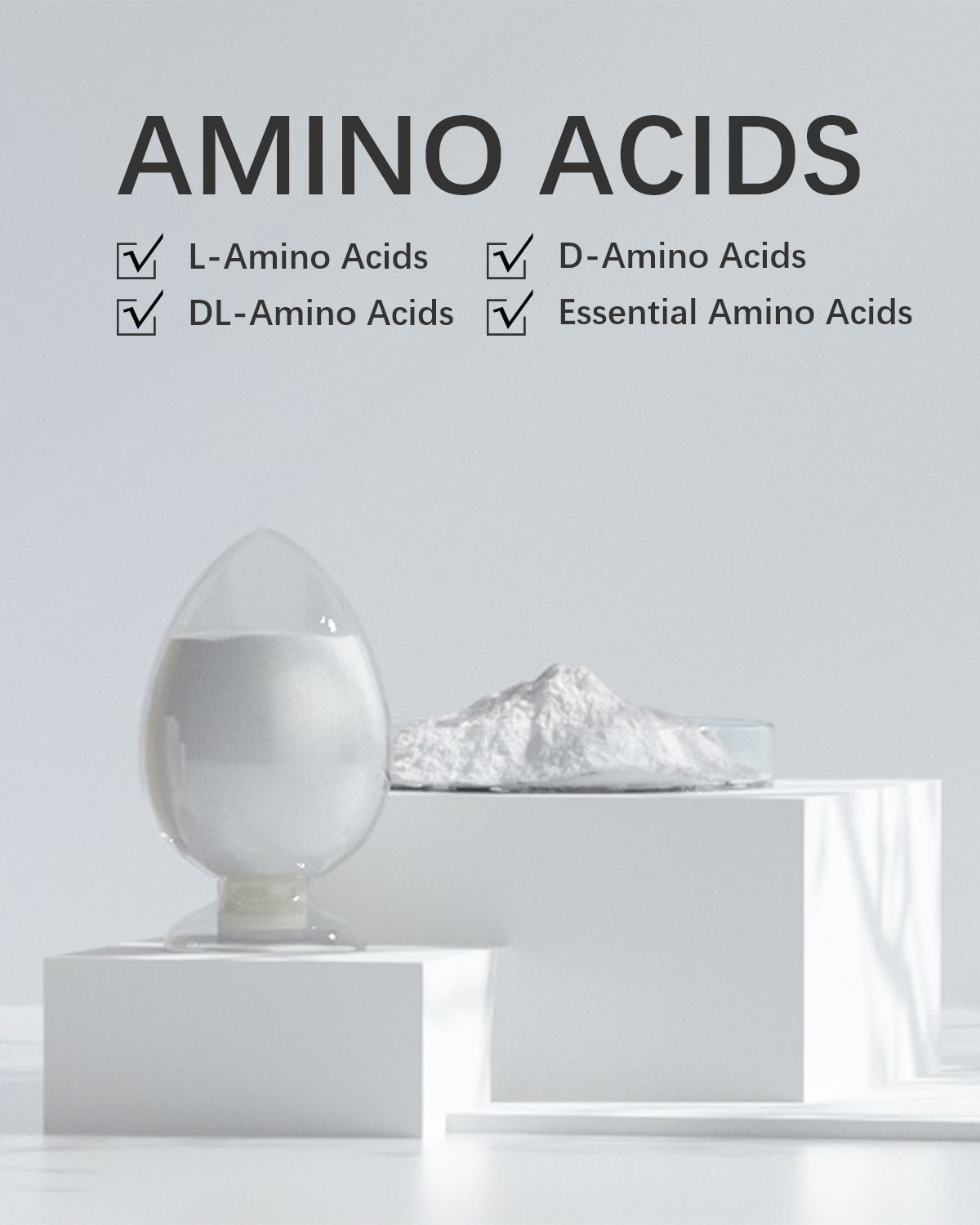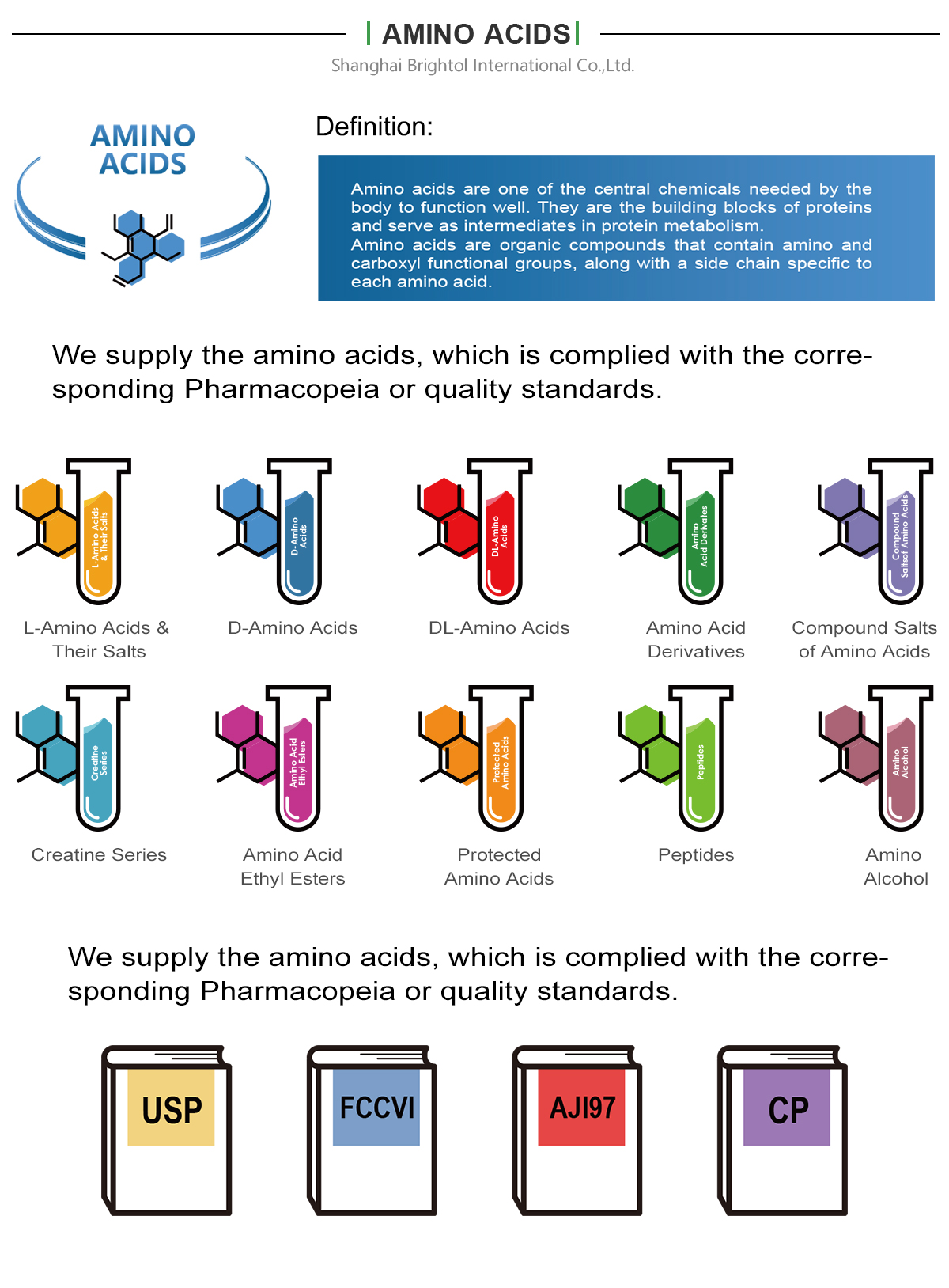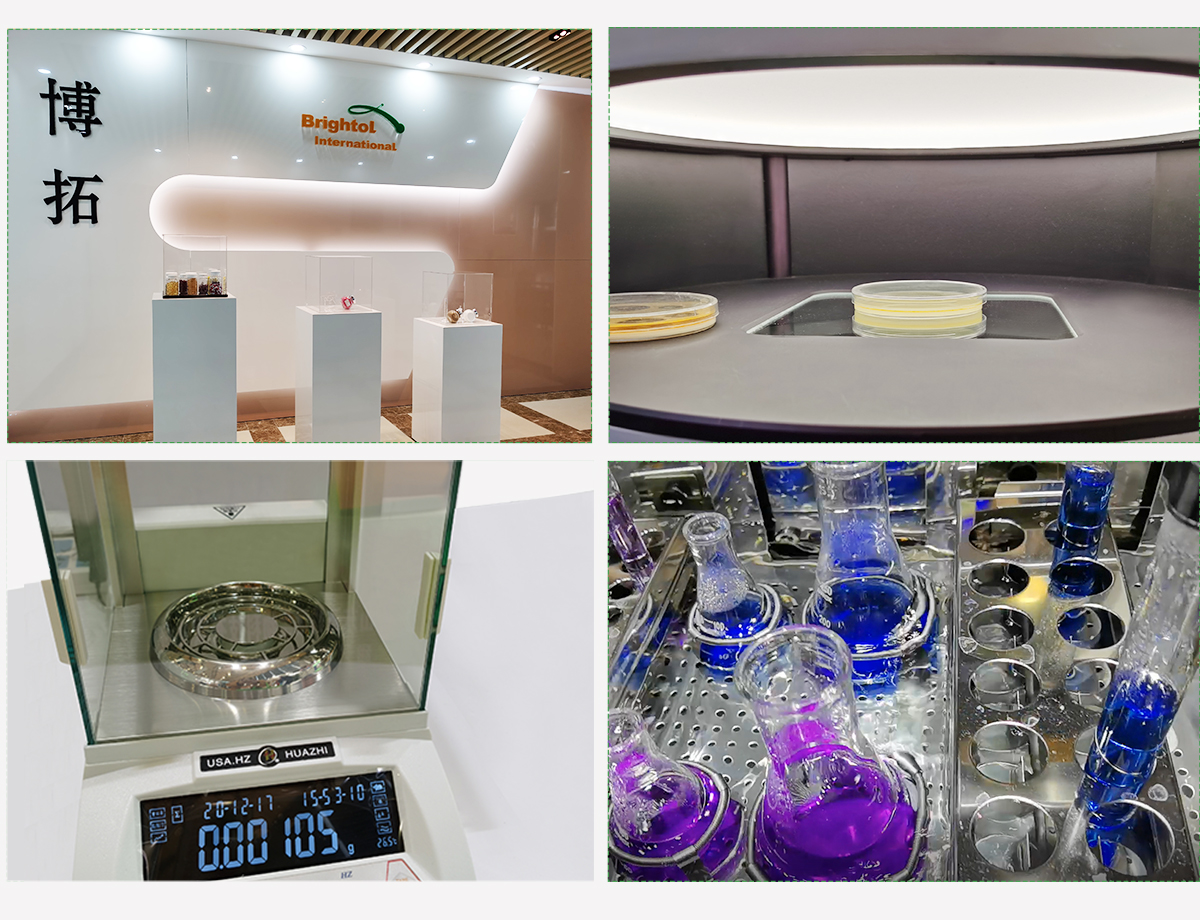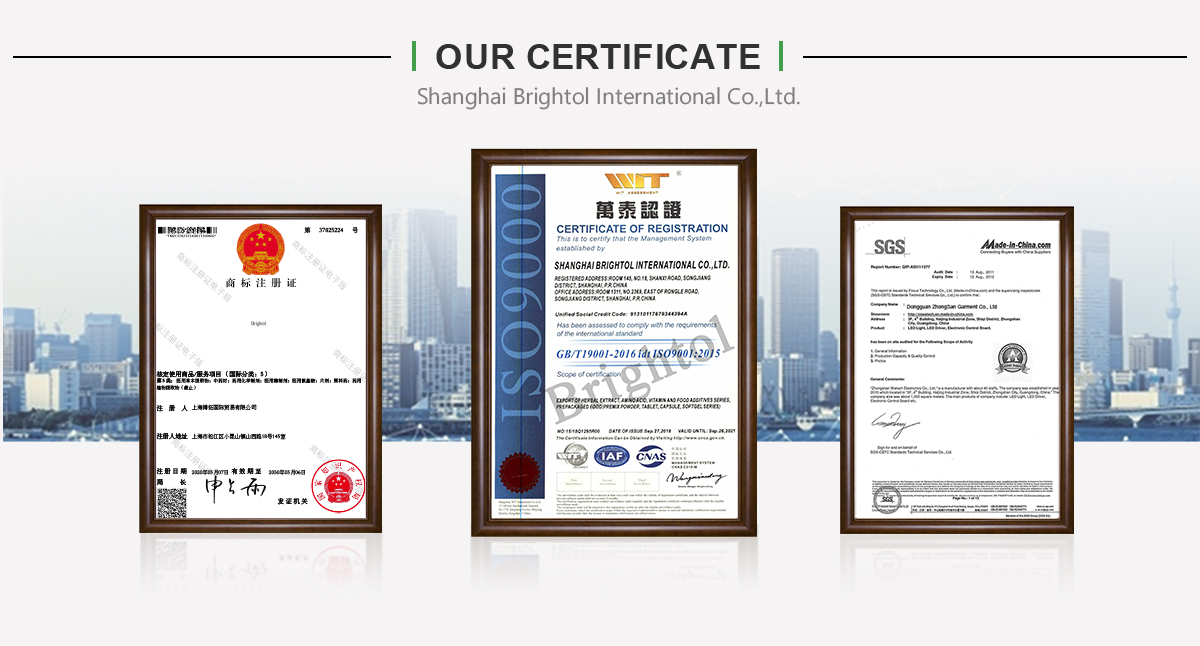

Product Name: L-Homoserine
Synonyms: L-2-Amino-4-hydroxybutyric acid
Molecular Formula: C4H9NO3
Molecular Weight: 119.12
CAS No.: 672-15-1
EINECS: 211-590-6
Description
Homoserine is a chemical substance, which is the intermediate product of threonine, methionine and cystathionine biosynthesis. It also exists in bacterial peptidoglycan.
Homoserine is a non essential amino acid, which plays a role in the metabolism of fat and fatty acids and the growth of muscle, because it contributes to the production of immunoglobulin and antibody, and serine is also needed to maintain a healthy immune system.


Product Name: L-Homoserine
Synonyms: L-2-Amino-4-hydroxybutyric acid
Molecular Formula: C4H9NO3
Molecular Weight: 119.12
CAS No.: 672-15-1
EINECS: 211-590-6
Description
Homoserine is a chemical substance, which is the intermediate product of threonine, methionine and cystathionine biosynthesis. It also exists in bacterial peptidoglycan.
Homoserine is a non essential amino acid, which plays a role in the metabolism of fat and fatty acids and the growth of muscle, because it contributes to the production of immunoglobulin and antibody, and serine is also needed to maintain a healthy immune system. Serine plays a role in the manufacture and processing of cell membrane, the synthesis of muscle tissue and sheath surrounding nerve cells. Serine can be obtained from soybeans, wine starter, dairy products, eggs, fish, lactalbumin, beans, meat, nuts, seafood, seeds, soybeans, whey and whole wheat. If necessary, the body synthesizes serine from glycine.
Application
Phosphatidylserine (PS) is a serine compound synthesized in human body. It is widely used in Italy, Scandinavia and other European countries to treat senile dementia and normal memory loss. For anti-aging effect.









